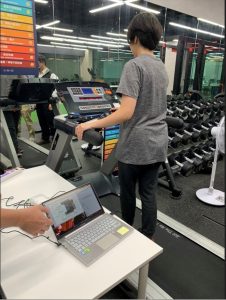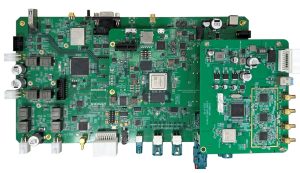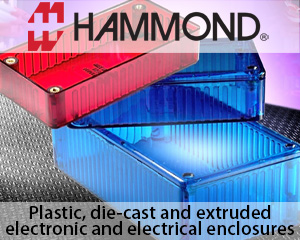
As the Mobile World Congress is about to open its door in Shanghai, China, for the MWC Shanghai 2023 edition, we wanted to share some of the demos that we are showcasing and highlight the strategic trends we are witnessing this year. That’s why we focus on smart mobility with a futuristic cockpit, power, and energy with a smart adapter, IoT and connectivity with wearables, and new contactless payment solutions. Instead of just lining up microcontrollers and other components, we continue to bring practical solutions that attendees may replicate in their labs to jumpstart their products. Let us, therefore, explore some of the key innovations we’re bringing at MWC Shanghai 2023.
Wearables and machine learning at the edge
The treadmill and the new sports experience

MWC Shanghai 2023 will allow us to showcase concrete applications, such as wearable and smart treadmills that use ST inertial sensors, like the LSM6DSV16X and the LSM6DSO16IS. Along with our partner GoMore, we’ll have runners on the treadmill tracking their progress to show the accuracy and reliability of our solutions in sports applications in a real-world setting. GoMore takes our devices and technologies and runs machine-learning algorithms to track cadence, step length, ground contact time, vertical oscillation, running power, pace, and more. It is the culmination of decades of innovations in sports applications that have tried to leverage sensors to track more easily the more minute details to improve overall performance.
The technologies powering the new sports experience
The presentation is also highly symbolic because it is a practical demonstration of the capabilities inherent to machine learning. At this junction in our industry, many are familiar with machine learning but aren’t sure why they would use it or what problems it could solve. Hence, some analysts talk about AI as a “solution in search of a problem”. The wearable and treadmill demos dispel this notion by showcasing an application that couldn’t possibly exist without machine learning. If GoMore were to use traditional applications to track so many variables, it would require an impossible amount of sensors and power, making the product unviable. The machine learning capabilities of ST sensors enable new measurements without adding components.
Another important lesson behind the demo is the importance we place on our partnerships to democratize the benefits inherent to the Internet of Things. Readers of the ST Blog know that we often aim to make our technologies more accessible to create smarter and more connected experiences. However, we also know that it’s critical to work with the industry to go from lofty goals to tangible reality, which is why we are not only promoting GoMore’s solution but their Edge SDK that takes advantage of our sensors and digital signal processors. Put simply, our demo at MWC is an invitation to attendees and local actors to work together to make the promises of IoT a reality to more consumers.
Smart Mobility
The new car experience
Car makers are increasingly giving their customers a lot more flexibility and choice when it comes to interactive software. Most programs in vehicles are still governed by manufacturers because, among other considerations, they must meet extremely stringent safety and security requirements. The code that handles airbag deployment or regenerative breaking is too sensitive to outsource. However, software-defined vehicles are transforming users’ relationships with their cars by allowing them to choose their UI designer. While car makers still work on interfaces, they also promote the ability to use third-party’s. In fact, according to Straits Research, nearly all cars produced today support Android Auto or CarPlay from Apple, and most consumers are asking for it.
The new hardware driving the new car experience

Moreover, interactive UIs are taking over larger surfaces. While smartphone vendors only ruled center consoles for a while, screens are getting bigger, and their UIs are overtaking gauge clusters, cabin controls, and other interfaces. Put simply, software-defined vehicles are transforming more aspects of the car experience. Consequently, we are showcasing a new smart cockpit solution at MWC Shanghai that houses an SPC58EC microcontroller, the L5965 power management IC, the HFDA801A audio amplifier, and a digital audio broadcasting (DAB) module made of the upcoming STA800 tuner, the TDA7707 , and the STA710. There’s also a satellite positioning module made of the STA8100 GNSS receiver and the ASM330LHHX 6-axis inertial sensor.

The ST demo runs Android Auto and shows how makers can rely on an entire ST portfolio to design the cockpit their customers already ask for. Because third-party software is taking over more UIs in the car, it is critical to provide a reliable hardware and software ecosystem that can handle the demands of those new interfaces over very long periods. The ST presentation enables attendees to see how to bring together the necessary building blocks to facilitate design and qualification operations and how to get started. After leaving the ST booth, attendees will already have a leg up on their proof-of-concept.
Understanding the trends shaping the industry
It’s impossible to list all the demos we’ll showcase at MWC Shanghai 2023, but here are a couple of the highlights. We’ll have a 140 W USB Power Delivery Adaptor using the ST-ONEHP for those designing fast chargers for smartphones and laptops. The reference design is USB-PD 3.1 compliant with energy efficiency meeting DoE Level 6 standards and a full load efficiency of more than 94%. Finally, we’ll demo a new STPay-Mobile that offers greater interoperability and flexibility by supporting numerous applications. In a nutshell, one platform not only supports banking transactions but public transport systems, car keys, mobile ticketing, and more. Companies can thus work on a single design and vastly increase its scope.







